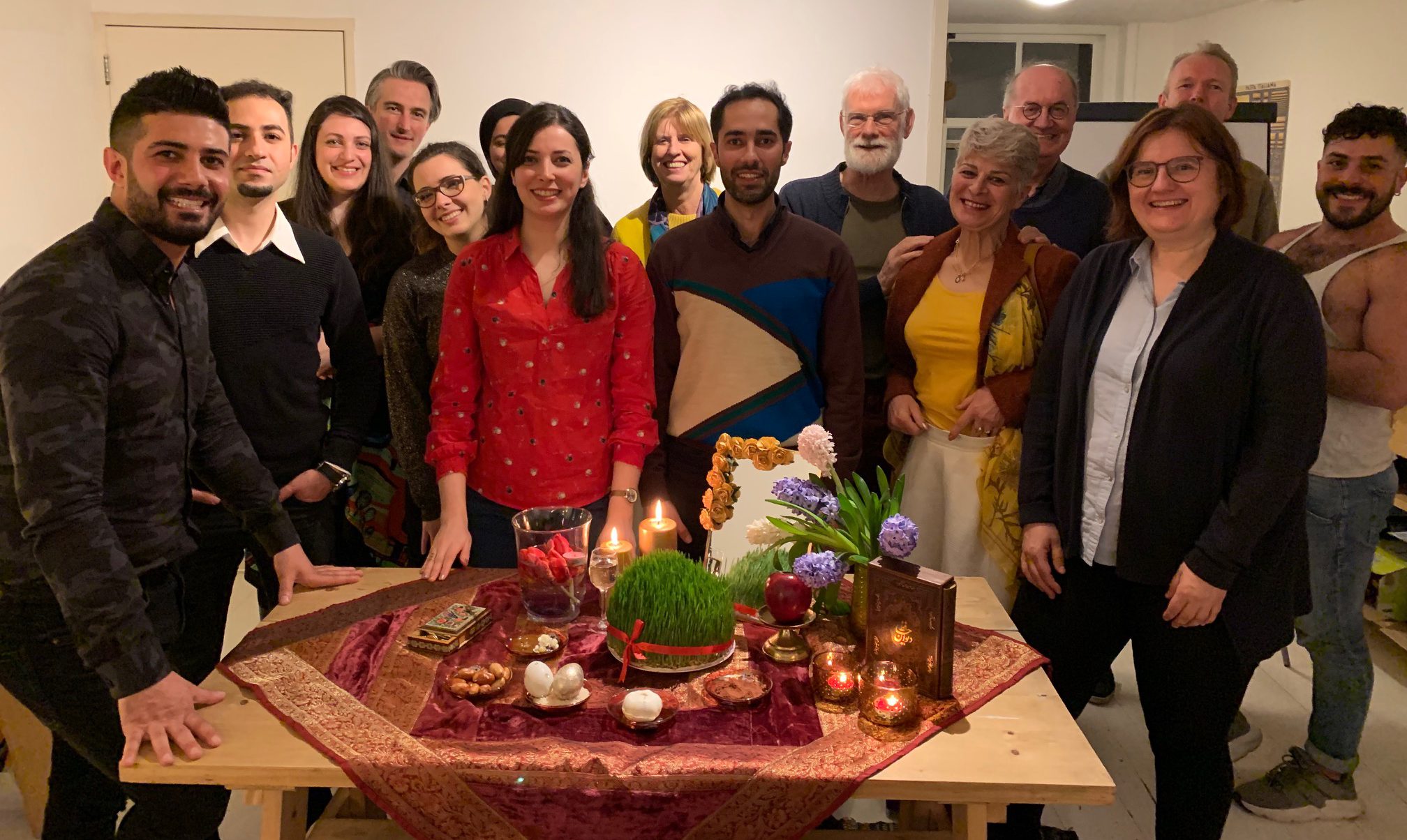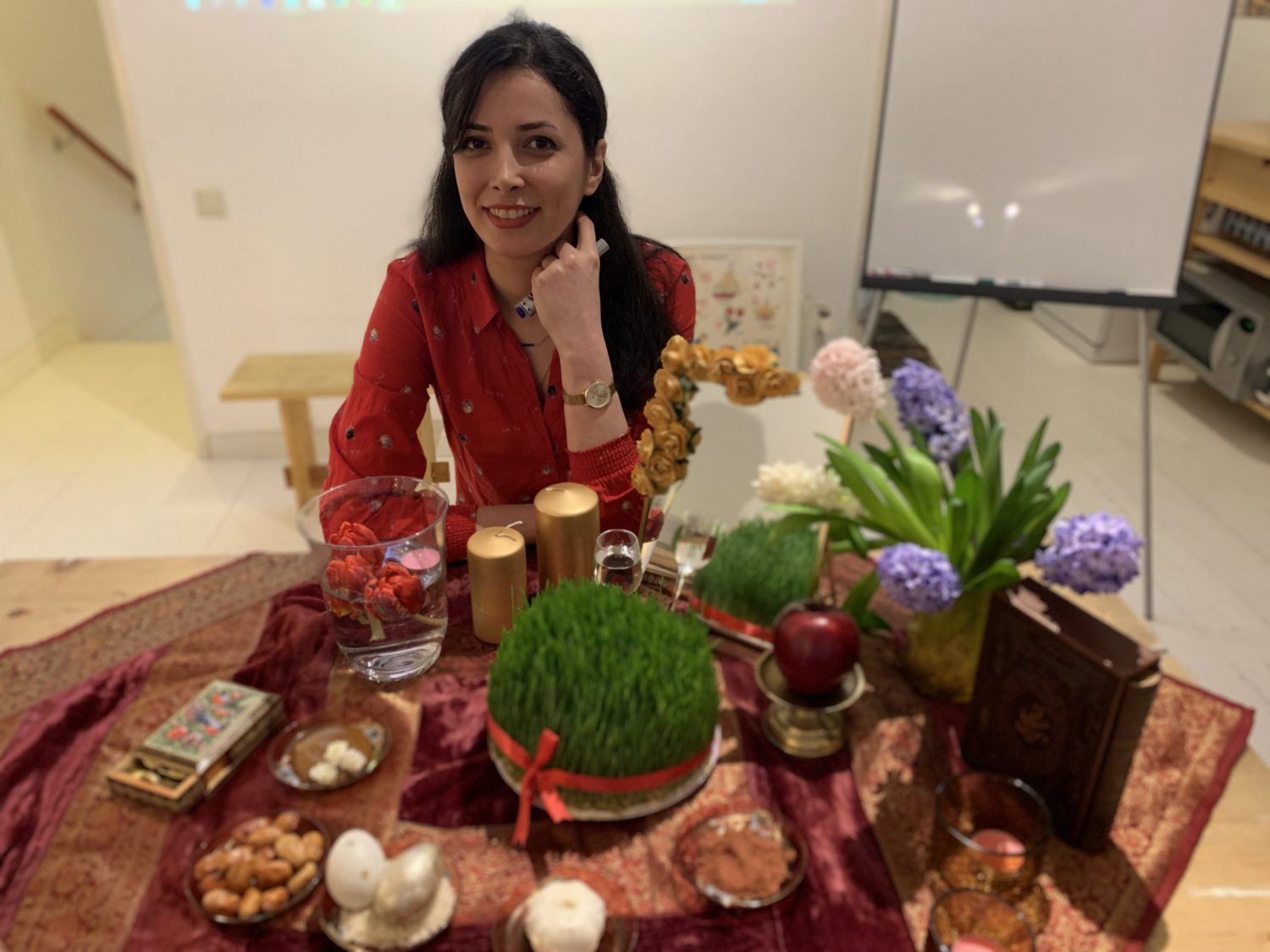Every year Iranians welcome spring by celebrating Nowruz (نوروز). We sit around our haft-sin (هَفت سین, table) and pray for salaamati (سَلامَتی, the state of being healthy), shaadi (شادی, happiness), solh va aaraamesh (صُلح وَ آرامِش, peace), and many other universal, but also personal hopes and desires.
This year, we will celebrate the Iranian new year in Amsterdam on Sunday 20 March, at 16:33:26. This very specific moment marks the start of spring, leading to a world full of flowers, blossoms, green trees, and singing birds.
Like mentioned, we gather around the haft-sin. This is a table with seven symbolic items that start with the letter sin (سـ, one of the S’s in the Persian alphabet):
– Sabze سَبزه (wheat, barley, mung bean, or lentil sprouts grown in a dish). Families usually grow sabze themselves rather than buying one. Sabze is the symbol of rebirth and growth.
– Senjed سِنجِد (oleaster). The symbol of love.
– Serke سِرکه (vinegar). The symbol of patience.
– Sir سیر (garlic). The symbol of health and medicine.
– Sib سیب (apple, usually a red apple). The symbol of beauty.
– Samanoo سَمَنو (wheat germ sweet pudding). The symbol of power and strength.
– Somaagh سُماق (sumac). The symbol of sunrise.
You might find other items on the haft-sin next to these items or as a substitute for them, such as:
– Aayne آینه (mirror). The symbol of self-reflection.
– Maahi ghermez ماهی قِرمِز (goldfish). The symbol of progress.
– Shirini شیرینی (sweets).
– Sonbol سُنبُل (hyacinth). The symbol of spring’s arrival.
– Sekke سِکّه (coin). The symbol of wealth and prosperity.
– Tokhme morgh rangi تُخمِ مِرغ رَنگی (colored egg). The symbol of fertility.
After starting the new year, a moment that’s called tahvil e saal (تَحویلِ سال), Iranians visit the older persons of the family and entertain the guests with a warm welcome, ajil (آجیل, nuts), shirini (شیرینی, sweets) and chai (چای, tea). Children will also receive eidi (عِیدی, a gift, usually in the form of money) from the host.
Nowruz is a very beautiful period for Iranians all over the world and we all have fantastic memories, especially from our childhood. For me, visiting one of my cousins in her villa house, celebrating Sizdabedar (سیزدَه بِدَر, Nature’s day on the 13th day of spring) and joining them in the jungles in the north of Iran, is one of the sweetest moments of my childhood – and whole life.
Please tell us about your Nowruz experiences and feelings. We will be happy to hear stories from you, in Persian or any other language you like!
Nowruz piruz va saale no mobaarak, نوروز پیروز وَ سالِ تو مُبارَک, happy Nowruz and new year!
This blog was written by our Farsi teacher Niloufar.


